Всё
← Back to Squawk list
Yeager re-enacts historic sound barrier flight
Sixty-five years after becoming the first human to fly faster than the speed of sound, retired Air Force Brig. Gen. Chuck Yeager is still making noise. The 89-year-old Yeager, who was featured in the movie "The Right Stuff," flew in the back seat Sunday of an F-15 Eagle as it broke the sound barrier at more than 30,000 feet above California's Mojave Desert — the same area where he first achieved the feat in 1947 while flying an experimental rocket plane. (news.yahoo.com) Ещё...Sort type: [Top] [Newest]
Thank you very much for posting this link. As a child of 8 I can remember very well looking at the picture of that 1947 event with the little aircraft being dropped off the bomber. Wow Chuck looks well...who would know when he was in that suit sitting there in that F15. Great that he is around as an example to all the young people.
Also see: http://www.cnn.com/2012/10/15/us/nevada-yeager-anniversary-flight/index.html?utm_source=feedburner&utm_medium=feed&utm_campaign=Feed%3A+rss%2Fcnn_topstories+%28RSS%3A+Top+Stories%29
Nice article... Glad he was able to do it one more time.
Nice article... Glad he was able to do it one more time.
In 1969 I was a one strip airman at Seymour Johnson AFB in Goldsboro, N.C. I had completed my level one training as a photographer and on my way to base operation to take photos of some return pilots receiving air medals. There was only three pilots and the short cermomy was conducted in the base commanders office. After taking by photos I was packing up my camera and equipment while everyone filed out of the room. When I stood up I was looking at that iconic picture of him in front of the Bell X-1. I looked over at the old man behind the desk and has he looked up at me I said "your him".
My childhood hero and to my young mine I just assumed he had retired years ago. I guess he found my expression and comment amusing. For the next year I was able to photograph him at several functions including the party at the officers club when got his star. At 11:00 pm he said Shute it's time for you and your camera to go. I was told the party cotinued on for several hours.
Happy to hear he is still with us.
P. Shute, Sgt.
Base Photo Lab.
Seymour Johnson, AFB
1968 - 1972
My childhood hero and to my young mine I just assumed he had retired years ago. I guess he found my expression and comment amusing. For the next year I was able to photograph him at several functions including the party at the officers club when got his star. At 11:00 pm he said Shute it's time for you and your camera to go. I was told the party cotinued on for several hours.
Happy to hear he is still with us.
P. Shute, Sgt.
Base Photo Lab.
Seymour Johnson, AFB
1968 - 1972
The Chuck Norris of aviation!
Or the Jack LaLanne.
or the kim kardashian

" According to conventional history, Chuck Yeager was first on 14 October 1947 in the Bell X-1. Yeager's craft was powered by a rocket engine. However, another flight test program that was in progress at Muroc Field (now Edwards Air Force Base) during the same time period was that of the jet-powered XP-86, prototype of the F-86 Sabre soon to gain fame in the Korean War. Shortly before the X-1's famous flight, North American test pilot George Welch had been conducting high-speed dives of the XP-86. During these flights, he had noticed odd behavior of the aircraft's speed indicator which jumped erratically as he approached Mach 1. Later on, this phenomenon would come to be known as "Mach jump" and is indicative of encountering shock waves at transonic speeds near the speed of sound. Witnesses on the ground had also reported hearing the tell-tale "BA-BOOM" sound indicative of the sonic boom created by a supersonic vehicle. Welch flew two of these possible supersonic flights before the X-1 officially broke the sound barrier, one on 1 October 1947 and the other on 14 October, mere minutes before Yeager achieved Mach 1.06. Unfortunately for Welch, his aircraft was not equipped with instrumentation to determine conclusively just how fast he had gone. It was not until 13 November that ground stations were used to measure the speed of the XP-86 in a dive, during which the aircraft was clocked at Mach 1.02 and 1.04 on two separate attempts. Since the dive angles during the measured attempts had been the same as those on his earlier flights and the aircraft had not undergone any modifications, it is quite possible that George Welch was not only the first to fly supersonically in a jet-powered plane, but the first to break the sound barrier as well. For political and security reasons, the Air Force clamped the lid on both stories, and it was not until December 1947 that Yeager's accomplishment was unveiled to the public. In addition, Air Force Secretary Stuart Symington had long before made the decision that a military pilot would be credited with breaking the sound barrier (Welch was a civilian), and it would be done while flying the X-1 research aircraft to justify its great expense. The capabilities of the Sabre were finally released in June 1948 when the Air Force and North American announced that the XP-86, piloted by George Welch, had broken the sound barrier in a dive. However, the date of Welch's achievement was given as 26 April 1948 with no mention made of his earlier flights. "